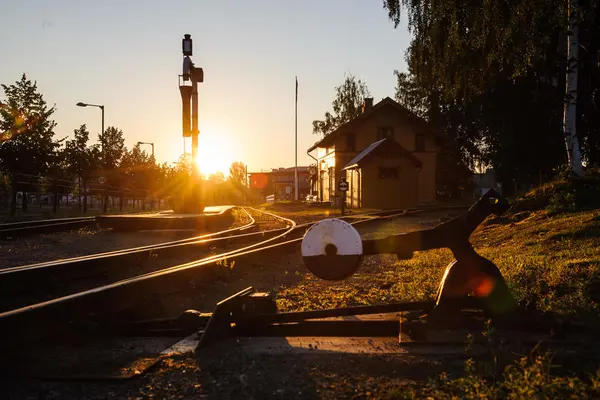Urskog-Hølandsbanen is Norway’s oldest railway museum and the only railway in Norway with three working steam locomotives.
- 1/1
Images from the railway (1945)
The Urskog-Hølandsbanen, was renamed to the Aurskog-Hølandbanen by NSB in March 1947. In local parlance, it was called “Tertitten”, which played on the fact that the line was a so-called tertiary line (tertiærbane) and the local dialect word for the bird great tit “Tertitt”.
The line was a narrow-gauge railway in the Akershus county, from Sørumsand station on Kongsvinger railway to Skulerud station in Aurskog-Høland. The line was in regular use with both goods and passenger transport until 1st July 1960. Today, the 3.6 km of railway is in use as a museum railway with the old private railway name “Urskog-Hølandsbanen” (UHB).
The first stage from Bingsfossen to Bjørkelangen was laid down by the Urskogbanen company, and was opened on the 14th November 1896. A second company, Hølandsbanen, lay down track from Bjørkelangen to Skulerud. It was opened on the 15th December 1898, but before then the two companies had joined together to form the Urskog-Hølandsbanen (U.H.B.). After a government order in 1900, the line was extended a little over 2km westwards to Sørumsand station. This last stretch was set in use from the 7th December 1903. The line was now 57km long. The company had headquarters in Bjørkelangen. The line was built by the cheapest possible methods as a so-called tertiary line with a track width of 750mm. Until 1st January 1945 the line belonged to a privately owned company. At this point, the line was nationalised and NSB ran the line for the last 13 years under the name Aurskog-Hølandsbanen.
The line’s traffic was mostly forestry and agricultural products. The cargo was driven to Skulerud where it was then sailed to Halden. Earlier there had been a corresponding departure with the DS “Turisten” on the Halden canal. This was part of a popular tourist attraction called ‘The great round trip’ (Den store rundreisen); train from Oslo to Sørumsand, Urskog-Hølandsbanen to Skulerud, boat on the Halden canal to Tistedal, and finally train from Tistedal or Halden back to Oslo.
-
Carl-Fredrik Salicath
The work to preserve Aurskog-Hølandsbanen for the future began in 1961. It was organized by a group of shareholders and all the work was carried out by unpaid volunteers. After a while they took over 3 kilometres of line around Sørumsand, two steam locomotives and several carriages. The first veteran train ran in 1966. There were no buildings or side tracks on this part of the line. The whole museum facility that visitors experience when visiting ‘Tertitten’ today has been built since the line became a museum. Three of Urskog-Hølandsbanen’s steam locomotives and two of the passenger carriages have been restored. Continuous restoration work and general technical repairs are carried out on the rolling stock.
When ‘Tertitten’ became a museum railway, the end of the line was a little outside the centre of Sørumsand and the rails to the station had been removed. In 1987 the first train drove once again from Sørumsand after a volunteer project had lengthened the line. Two years later, the museum facility, including the station building, was ready and there was an official opening of the new length of the line. The whole museum facility is state protected. Today, Urskog-Hølandsbanen is a foundation, and the museum railway is run by Venneforeningen Tertitten. Urskog-Hølandsbanen is a department of Museene i Akershus (MiA).
(Author: Erik Borgersen, edited by Eirik Kristoffersen)

